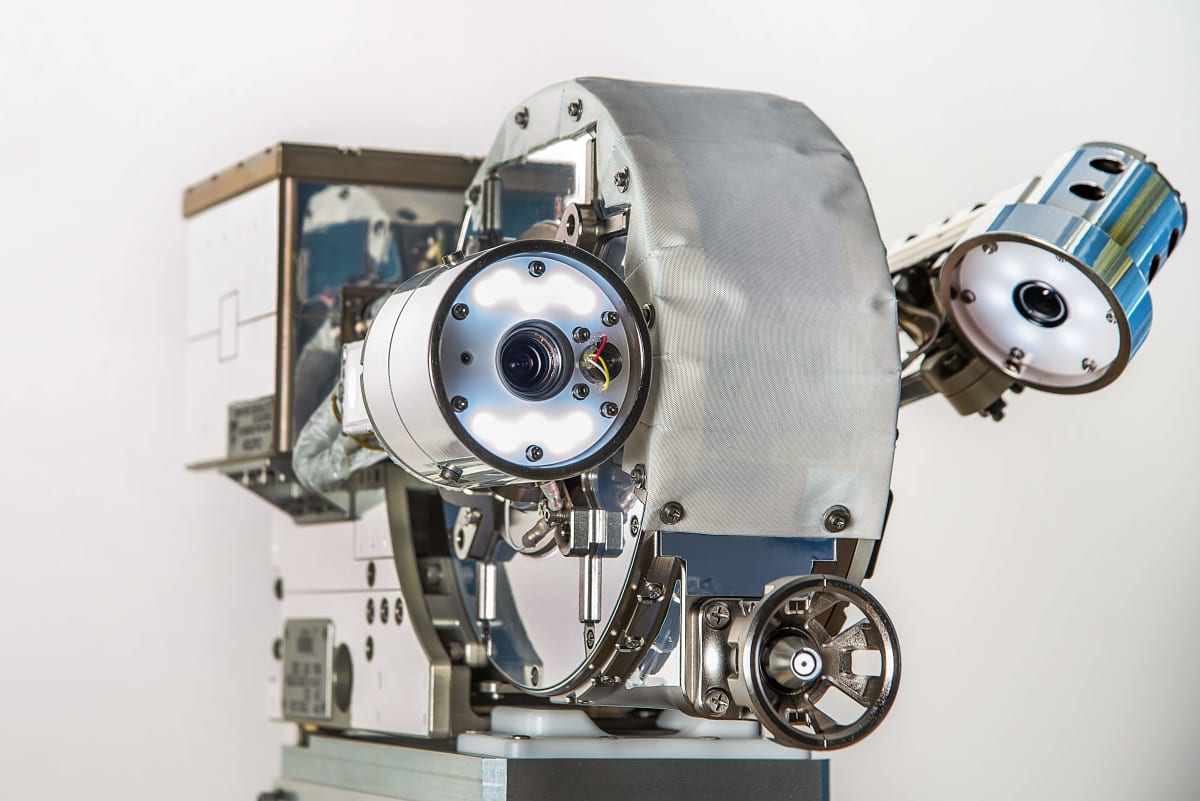Dextre Successfully Refuels Mock Satellite and Aces a Major Test for Space Robotics
Longueuil, Quebec, January 25, 2013 - Dextre, the Canadian Space Agency's robotic "handyman" on board the International Space Station (ISS), made space history last night by successfully refueling a mock satellite on the exterior of the station. Topping off the satellite's fuel tank was the pivotal task in the experimental Robotic Refueling Mission (RRM), a collaboration between the National Aeronautics and Space Administration (NASA) and the Canadian Space Agency (CSA) to demonstrate how robots could service and refuel satellites on location in space to extend their useful lifetime.
For RRM, NASA's Goddard Space Flight Center designed a module simulating a satellite, as well as custom power tools for Dextre. Since RRM operations began in 2011, Dextre has performed three series of tests to show how a robot could service satellites, which were designed never to be opened in space. In this latest set of operations, Dextre removed two safety caps, cut through two sets of thin retaining wires, and finally transferred a small quantity of liquid ethanol into the washing machine-sized module. The latter maneuver was particularly tricky, since handling liquids in space required perfect precision to prevent dangerous leaks. The specialized tools built for the job allowed Dextre to seal the connections between the tool and the fuel valve to eliminate the possibility of leaks. Adding to the level of difficulty was the fuel hose itself, which adds additional forces that tend to pull Dextre's hands. It took the combined skills of the experienced NASA and CSA robotics controllers to pull off this first-of-a-kind space refueling demonstration successfully and without any mishap.
RRM is a significant step in pioneering robotic technologies and techniques in the field of satellite servicing-saving ailing space hardware by refueling or refurbishing them before they become space debris. The ability to refuel satellites in space could one day save satellite operators from the significant costs of building and launching new replacement satellites. With over 1100 active satellites currently operating in the near-Earth environment (many of them worth hundreds of millions of dollars), and an additional 2500 inactive satellites still orbiting around our planet, the savings could be substantial.
 Space isn't exactly the safest of places for squishy meatbags like us, what with the lack of atmosphere and all. But when satellites in orbit break, somebody's got to fix them. That's why NASA is developing a robotic remote viewing system called the...
Space isn't exactly the safest of places for squishy meatbags like us, what with the lack of atmosphere and all. But when satellites in orbit break, somebody's got to fix them. That's why NASA is developing a robotic remote viewing system called the...
 Space isn't exactly the safest of places for squishy meatbags like us, what with the lack of atmosphere and all. But when satellites in orbit break, somebody's got to fix them. That's why NASA is developing a robotic remote viewing system called the...
Space isn't exactly the safest of places for squishy meatbags like us, what with the lack of atmosphere and all. But when satellites in orbit break, somebody's got to fix them. That's why NASA is developing a robotic remote viewing system called the...

